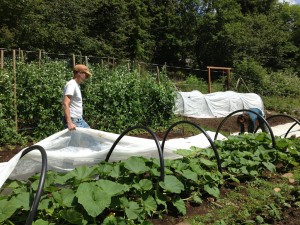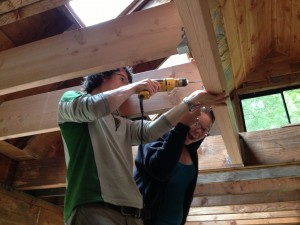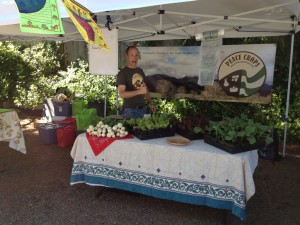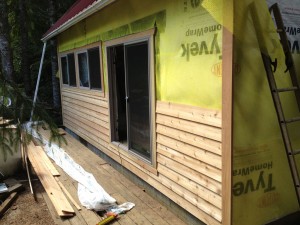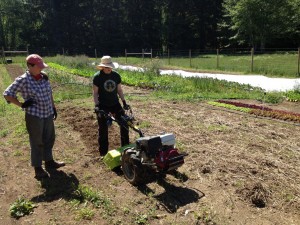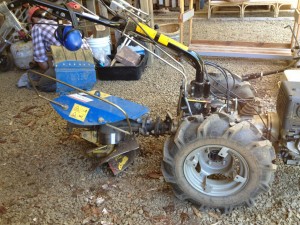It’s honey season once again in the Nehalem river valley. How time flies (and bees too!).
 This year, we thought we’d experiment with some new packaging. Back in the early 1900s, there was a glass jar company called “Muth” that made some really cool looking, apothecary-type honey jars. A few companies still make them in small batches as a novelty, so we ordered two cases to try when bottling our honey. We noticed last year that a portion of our shoppers last season bought honey as a gift- so what better way to package that, than in an antique glass bottle with a cork stopper sealed with wax? The packaging and prep time is much higher, but they are so darn cute and really got a lot of attention at the market yesterday. I sent a picture to my beekeeper buddy Mark, joking “this is how you sell honey for $16 a pound.” We have an interesting difference in the honey market, between where we are on the Oregon coast and where he is in Amish country on the Indiana-Ohio border. He gets about 4 times a much honey per hive as we do… we live in a wet climate with short cool summers that gives us half the national average of production. His region has long, hot summers, and he’s surrounded by farmers with forageable crops, ideal for bees and often giving twice the national average of honey per hive.
This year, we thought we’d experiment with some new packaging. Back in the early 1900s, there was a glass jar company called “Muth” that made some really cool looking, apothecary-type honey jars. A few companies still make them in small batches as a novelty, so we ordered two cases to try when bottling our honey. We noticed last year that a portion of our shoppers last season bought honey as a gift- so what better way to package that, than in an antique glass bottle with a cork stopper sealed with wax? The packaging and prep time is much higher, but they are so darn cute and really got a lot of attention at the market yesterday. I sent a picture to my beekeeper buddy Mark, joking “this is how you sell honey for $16 a pound.” We have an interesting difference in the honey market, between where we are on the Oregon coast and where he is in Amish country on the Indiana-Ohio border. He gets about 4 times a much honey per hive as we do… we live in a wet climate with short cool summers that gives us half the national average of production. His region has long, hot summers, and he’s surrounded by farmers with forageable crops, ideal for bees and often giving twice the national average of honey per hive.
However, his economic climate does NOT work in his favor. There are many beekeepers in his area, and the market is flooded with honey in the fall, driving prices down. In contrast, I am one of only two beekeepers in my county selling honey at the markets, and I live in a area populated mostly by liberal people who are looking for local honey for its health benefits, and tourists… both of who are willing to pay a premium for an exceptional product that is of limited quantity. It’s an interesting contrast.
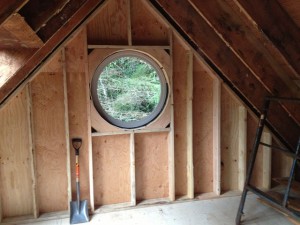 And in other news, the house is still rolling along, slowly. We’ve framed in the gable wall at the sleeping loft, and installed the first round window. Now I need to get the roof off, the dormer built, and the new roof installed before the rainy season returns. We got some rain this week for the first time in quite a while, so it’s my warning to get hopping before too late! Better get on that…
And in other news, the house is still rolling along, slowly. We’ve framed in the gable wall at the sleeping loft, and installed the first round window. Now I need to get the roof off, the dormer built, and the new roof installed before the rainy season returns. We got some rain this week for the first time in quite a while, so it’s my warning to get hopping before too late! Better get on that…


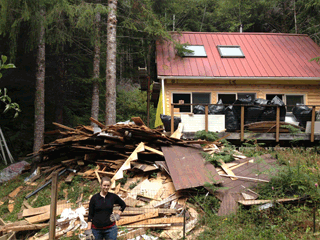
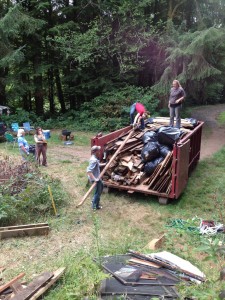
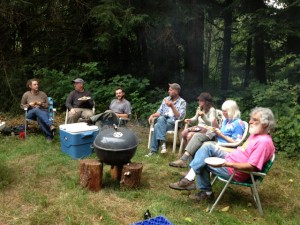

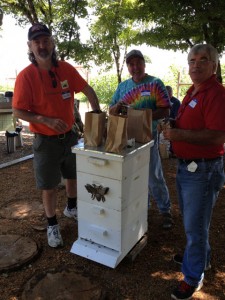
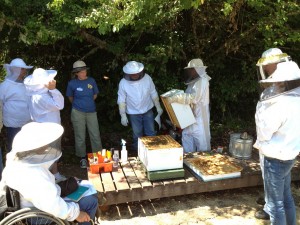

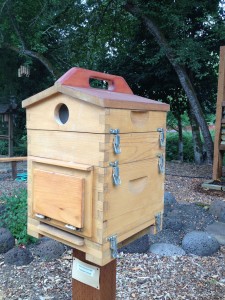
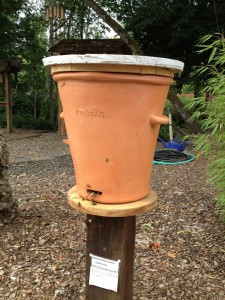
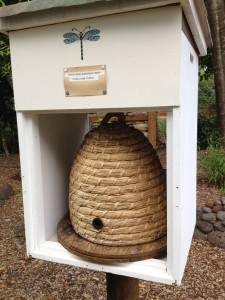
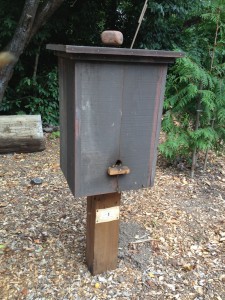
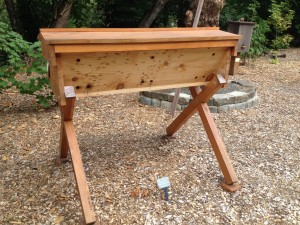
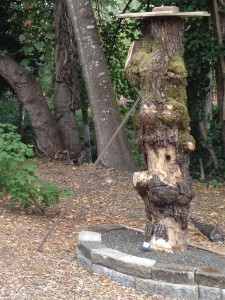
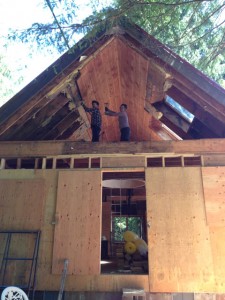
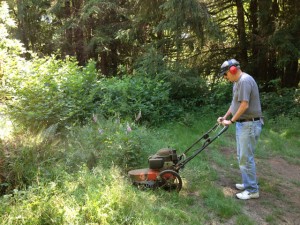
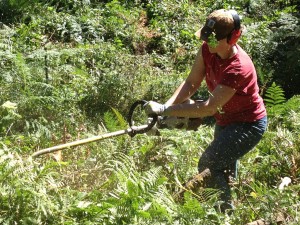
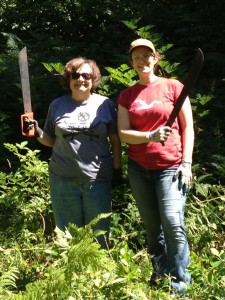


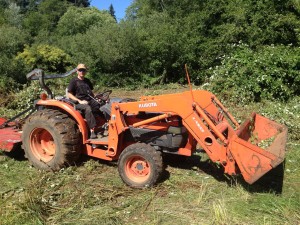
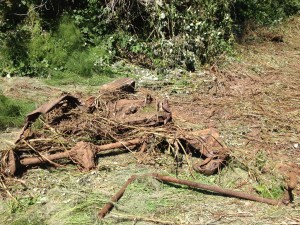

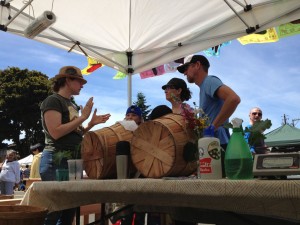
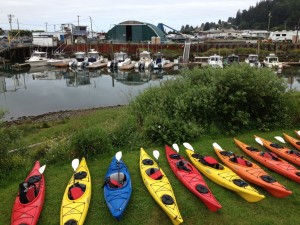

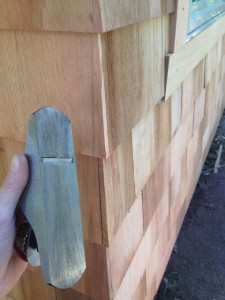

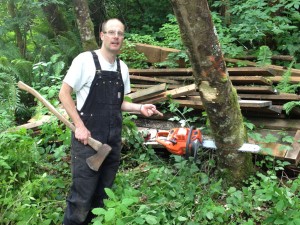

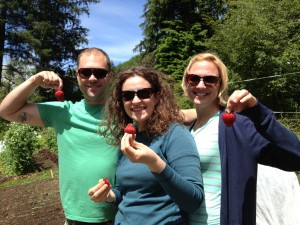 This week brought something exciting and new… two of our friends from Peace Corps came to visit! Joe & Katy
This week brought something exciting and new… two of our friends from Peace Corps came to visit! Joe & Katy 